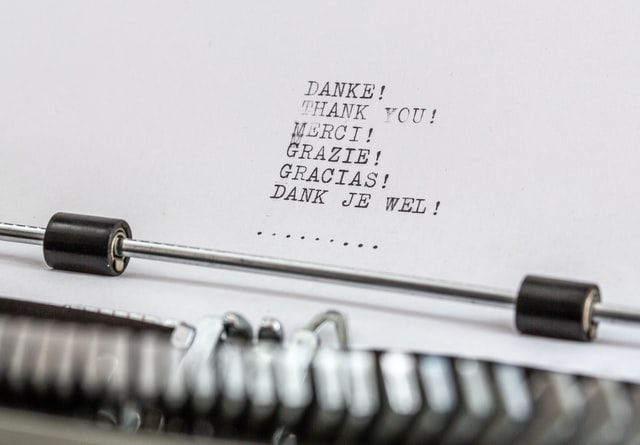
Writing the acknowledgement section of a book can be hard. Authors often struggle with questions such as:
In this post I hope to demystify the acknowledgement writing process and help you see acknowledgements as assets.
The concise answer is as long as it needs to be. Unlike the rest of the book, which is reader focused, acknowledgements are for those being acknowledged. Many readers skip that part of the book altogether. Because they do, many authors and publishers see the acknowledgement section as optional. I do not.
Have you ever watched a film that didn't include crediting its contributors? Like filmmaking, publishing is a team sport.
Thanking people who help us accomplish our goals is a kind thing to do. Of course, we could say thanks when talking to them. We could send them a text message. We might even send them a hand-written thank you note. All those things are great, but authors have the opportunity to do more.
I mentioned just above that it's the nice thing to do. Below I'll talk about why it's a marketing must. But there's one other thing to consider.
No acknowledgement section can be interpreted as the author's unwillingness to acknowledge the contributions of others. This may not be the case at all, but silence can be dangerous. There's no downside to expressing gratitude, but silence can work against you.
The short answer is each person who's had a positive impact on your professional journey and helped you get your book from concept to creation. If you think about it, this is likely a long list.
I recommend making a list by category:
There are many ways to organize an acknowledgement section. I often recommend that authors move in chronological order, starting with family members and moving toward the publishing team. It depends on what your list looks like.
I recommend being as specific as possible in your thanks rather than making a list of names and issuing a blanket thank you. There are times, however, when it's appropriate to generalize your acknowledgement. For example, when you haven't had direct contact with members of the publishing team (your book designer and proofreader perhaps). You can individually note the primary players, then add something like "and the entire [publishing house] team whose commitment to excellence is reflected in these pages."
Aside from working with your editor and agent to craft the acknowledgement, I recommend looking at the acknowledgement sections of at least 7 professionally published books. This helps you determine what you like and don't like and jog your memory about people you may have forgotten.
Remember that everyone appreciates being publicly thanked. The more specific your thanks, the better.
Yesterday. Perhaps the reason authors fail to mention some of the people who've positively impacted them is that they write the acknowledgement section at the last minute. They're under pressure to deliver it to their publisher and at the end stage of the publishing process are so overwhelmed with details and names that they simply cannot remember everyone or craft an authentic thank you.
So, start early by jotting down people's names and their contributions. Keep it handy so that when someone comes to mind you can quickly add them to the list. When it comes time to properly craft the acknowledgement section of your book, it'll be all but written.
In addition to thanking supporters in the acknowledgement section of your book with a description of the type of help they offered and what it meant to you, send each person you name a signed copy of your book. It's an added expense that can pay off big.
Keep in mind that publishing professionals can use quotes from your acknowledgement section as testimonials. These help the people who've helped you get more clients and make strategic connections. This helps them and can help you because the more high-value connections your contributors have the more value they can provide for the life of your book.
When you give a copy of your book to a contributor, you demonstrate that you see your relationship as a long-term, strategic partnership, not a transactional one.
Your book sitting on supporters' and contributors' shelves serves as a 24/7 reminder of you and your work and the good vibes you share. Thanking supporters and contributors for past work is a classy thing to do. Thanking them in your book and giving them a copy of the book encourages them to support you and contribute to your work in the future.
So, I hope you can see why an acknowledgement section is so important and that this helps you write and maximize yours for your sake and the sake of all who've walked this journey with you.
Ready to talk to an experienced and results-oriented ghostwriter/book collaborator, book doctor, and developmental editor? To schedule a free, 30-minute consultation, click here.
Photo by Wilhelm Gunkel on Unsplash
CI Communication Strategies
2021
